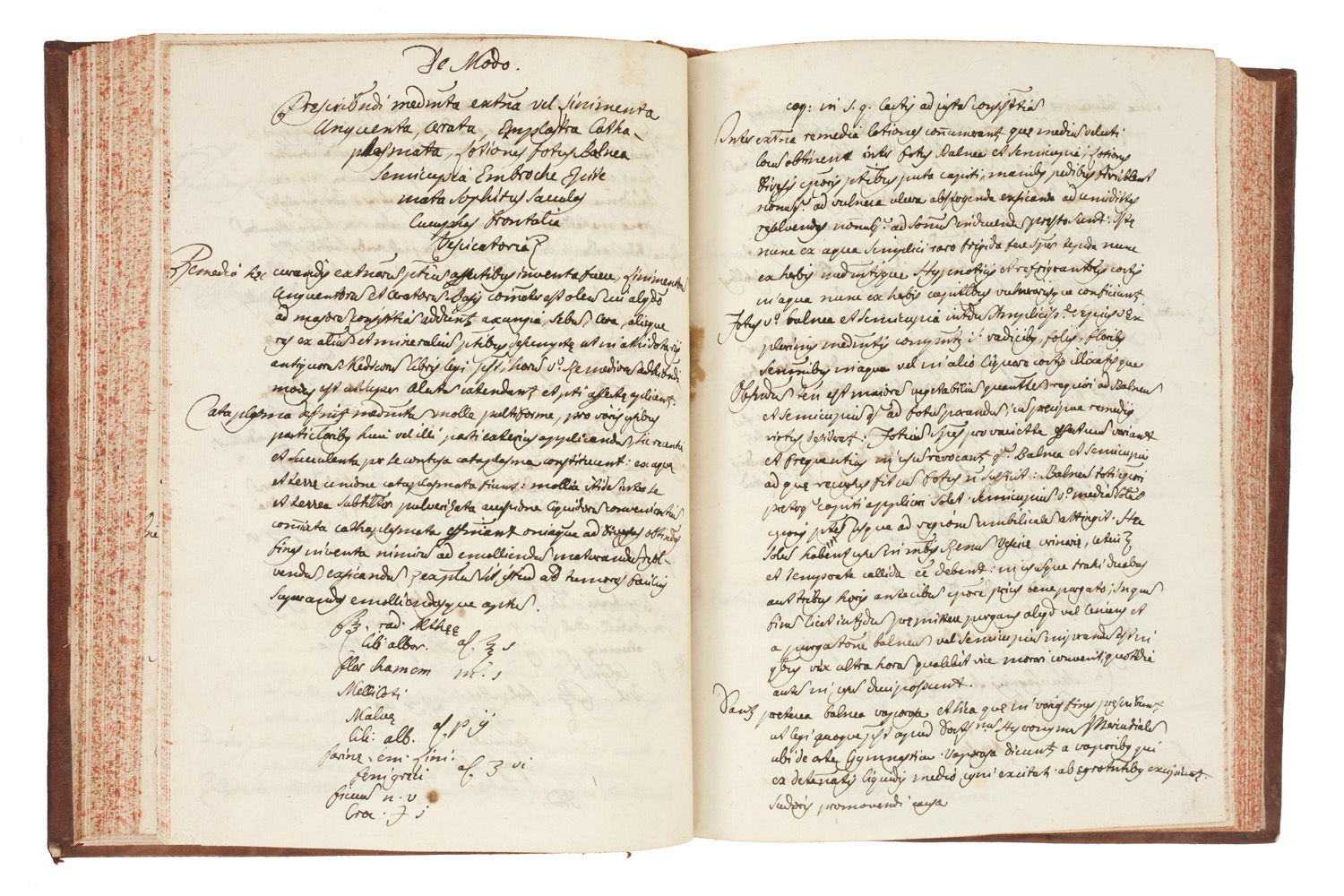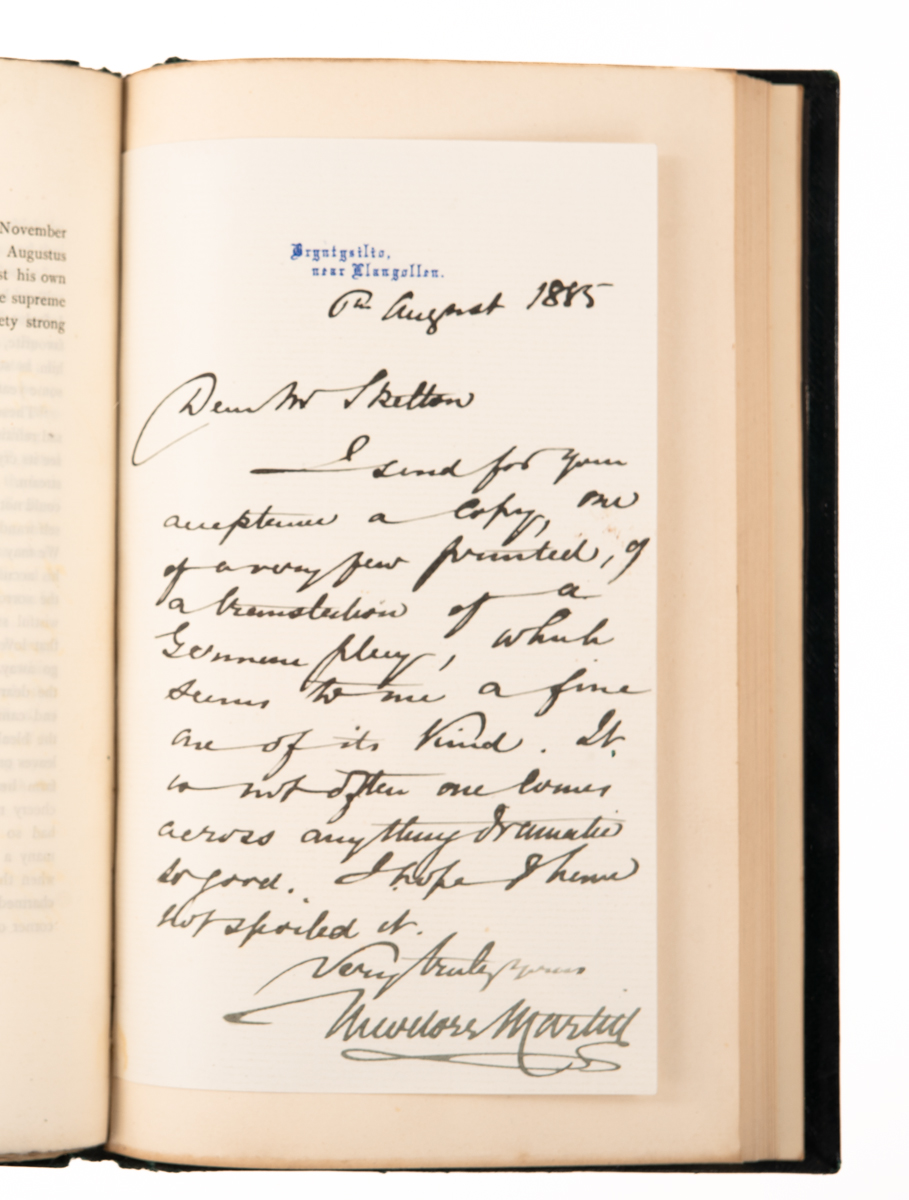
PHARMACY AND FEVERS
[TACCONI, Gaetano.]
‘Medicae inst[ructio]nes’, ‘Tractatus de febribus’, and ‘Compendiosa nonulloru[m] m[or]boru[m] peculiariu[m] notitia’.
[Bologna, Italy,] 1739.
Manuscript on paper, in Latin, 4to (230 x 175 mm), 3 parts in 1 vol., ff. [72]; [64], [4 (blank)], [23], [1 (blank)]; [36]; neatly written in dark brown ink a single hand, 30 lines per page; initial leaf backed, a few marginal paper repairs, very occasional ink stains or marks, some show through towards end; very good in eighteenth-century mottled calf, spine gilt in compartments with lettering-piece, small areas of loss due to worming at foot of spine; inscription to first page: ‘Docente illustmo. atque excellentmo. dno. Caietano Tacconis phil[oso]phiae et med[ici]nae doctore ac professore puplicho in patrio archygymnasio lectore anatomycis emerito an[n]o 1739’; armorial bookplate of ‘Josephus Girard D.M.’ to front pastedown.

Added to your basket:
‘Medicae inst[ructio]nes’, ‘Tractatus de febribus’, and ‘Compendiosa nonulloru[m] m[or]boru[m] peculiariu[m] notitia’.
An extensive manuscript compendium of apparently unpublished medical texts compiled by a student at the Archiginnasio of Bologna who studied under Gaetano Tacconi (1689–1782), comprising notes on the prescription and preparation of medication, on fevers, and on a wide variety of illnesses. The medical school at Bologna was one of the most important in Europe, and the Archiginnasio famous for its 17th-century anatomical theatre. Tacconi, a native of Bologna and a student of Antonio Valsalva, served the university as professor of philosophy, anatomy and surgery and published several medical treatises, including Notizia della ferita (1738) and De nonnullis cranii ossiumque fracturis (1751).
After introductory chapters covering, for example, hygiene, body fluids, diet, and diseases and their indicators, the text of the ‘Medicae instructiones’ turns to the prescription, preparation and dosages of medicines, for internal and external use, giving numerous recipes for various powders, pills, tablets, ointments, and poultices.
The second part is devoted to fevers, analysing different types (e.g. continuous, intermittent, contagious, and pestilential), their causes and symptoms, and surgical and pharmaceutical cures, giving prescriptions with ingredients and measures. The third part deals with over thirty illnesses, including apoplexy, epilepsy, paralysis, catalepsy, fainting, angina, pneumonia, heart palpitations, dysentery, haemorrhoids, arthritis, diabetes, and gonorrhea. Both parts end with a few case histories. Medical authorities referred to include Thomas Fuller (author of a Pharmacopoeia) and Herman Boerhaave.
Provenance: bookplate of Joseph Jacques Ignace Girard (1732–1779), who studied medicine at Fribourg, Switzerland.

